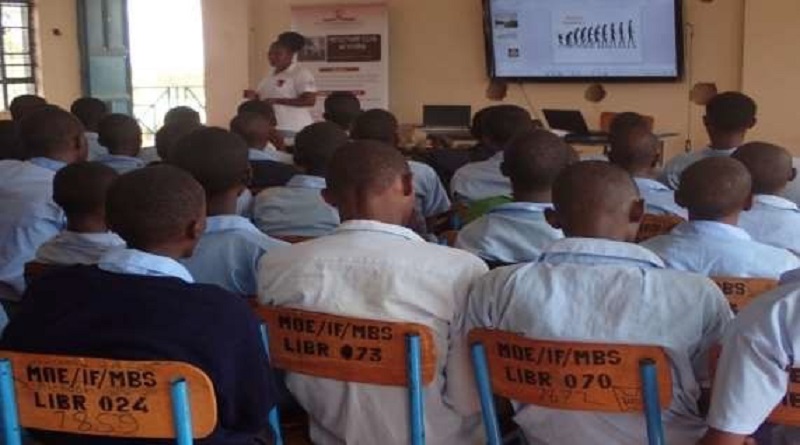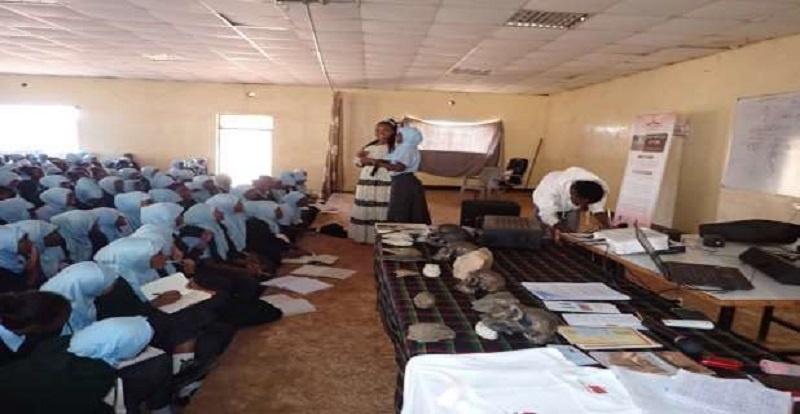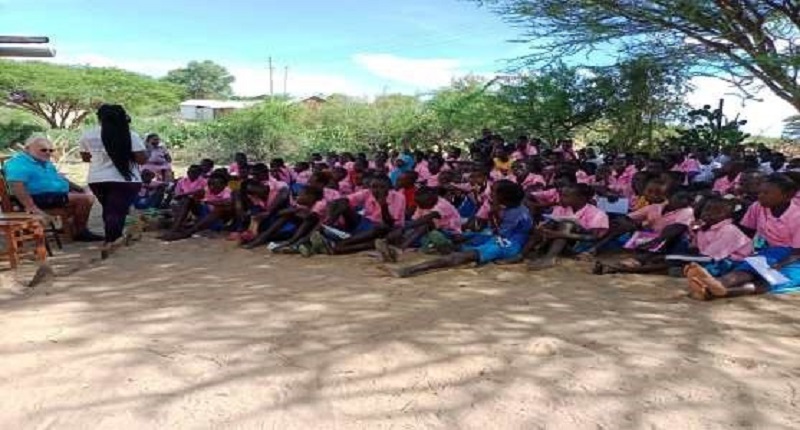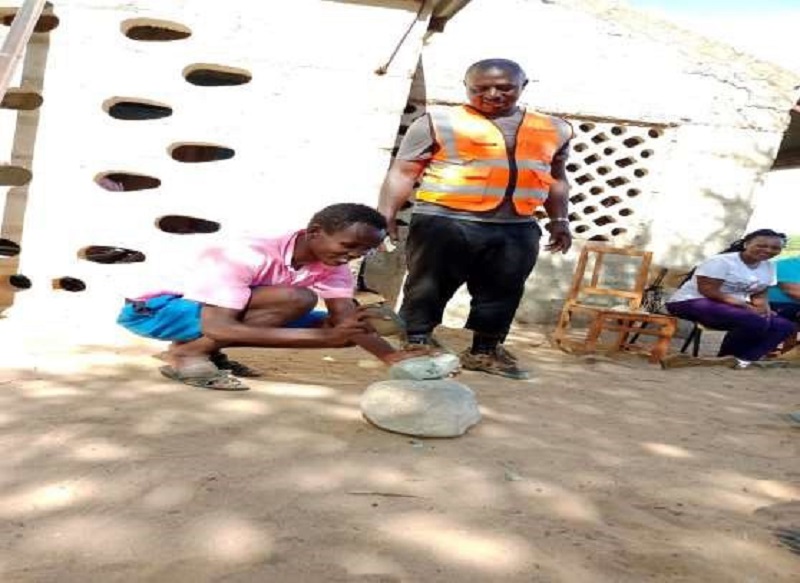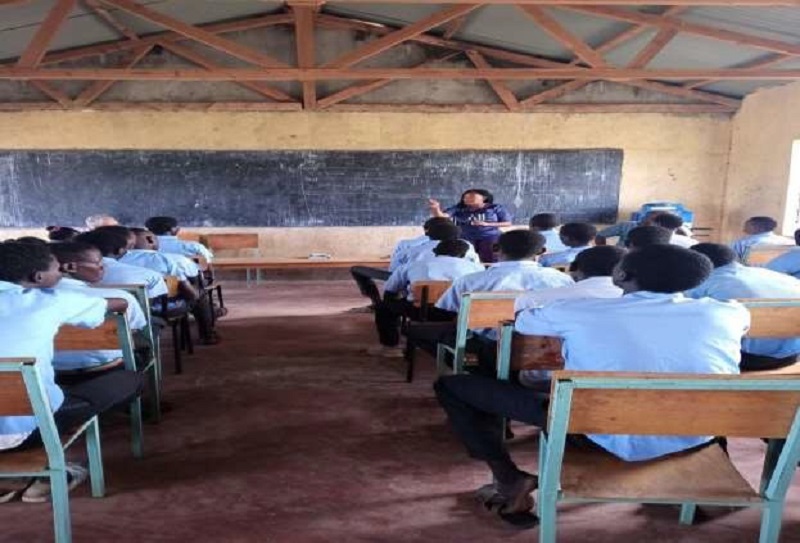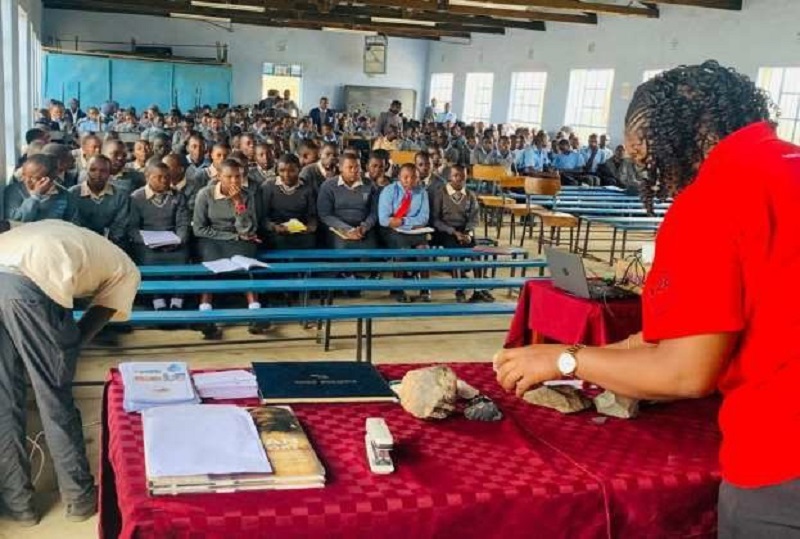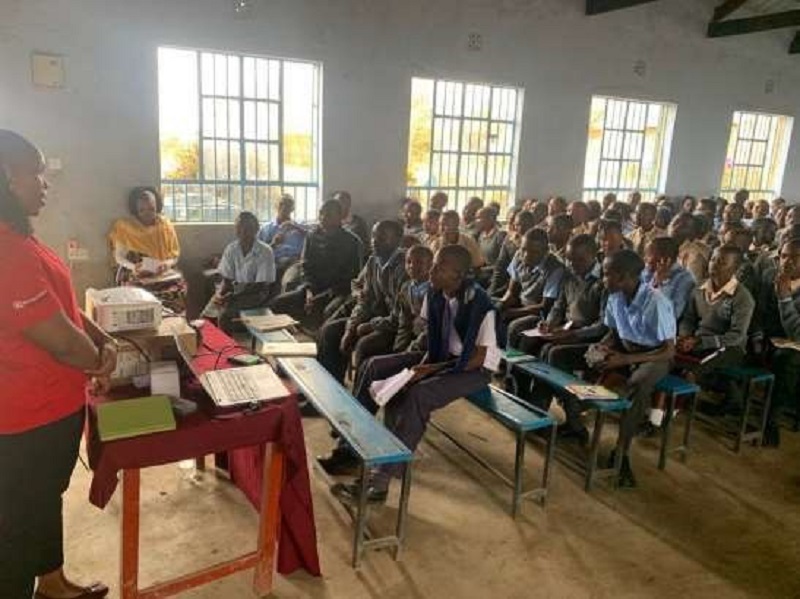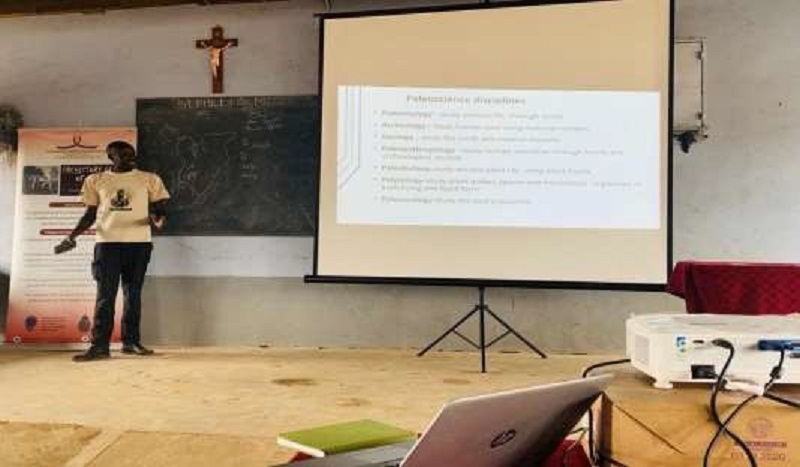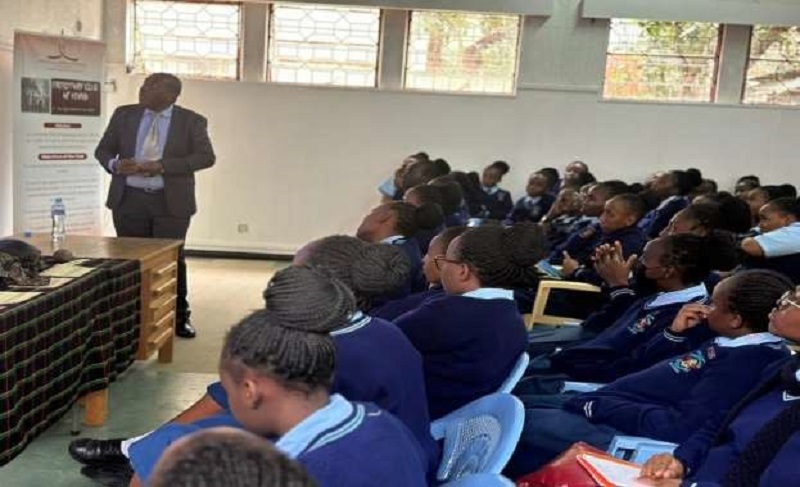Global Initiatives Grant Report – Teaching Prehistory and Human Evolution in Marginalized Communities and Schools in Kenya
Kenya has been regarded as the cradle of humanity because of its rich prehistoric remains that include fossils of early humans and evidence of ancient technological innovations. However, despite the large numbers of particularly hominin fossils that illuminate our ancestry, little is known about them by the Kenyan general public. For this reason, the Prehistory Club of Kenya domiciled in the Department of Earth Sciences at the National Museums of Kenya (NMK) has continued to educate the Kenyan public about prehistory and human evolution, mostly through school-based outreach programs that include presentations and mobile exhibitions.
In December 2022, through its Global Initiative Program the Wenner-Gren Foundation provided funds to the Prehistory Club based at the NMK to support programmes aimed at creating public awareness (especially among high school students) on prehistory and human evolution, and the contributions that Kenya has made towards advancing understandings of human evolution. The outreach programmes targeted the schools in the marginalized counties in Kenya, particularly Marsabit, Isiolo, Kitui, and Baringo. Several schools in Nairobi County were also engaged. This report will give a detailed account of the activities undertaken during the outreach programmes.
The Prehistory Club conducted extensive outreach programmes in Marsabit and Isiolo counties in Northern Kenya (21st-26th March 2023 and 15th-17th April 2023).
Activities undertaken there included talks on human evolution and ancestry. The sessions delved deep into the questions surrounding human evolution and our shared ancestry with primates like chimpanzees, bonobos, and gorillas. Using casts of hominin fossils, the presenters highlighted the anatomical differences between early hominins such as the australopithecines and modern Homo sapiens. The evolution of humans was tied to technological advancements, elucidating the changes from the earliest stone tools to the micro-liths of the Later Stone Age (LSA) and the shift from stone tools to iron smelting technology.
Other activities included demonstrations on stone tool making where the audiences were given detailed demonstrations on how our early ancestors would have made and used stone tools, emphasizing that stone tool making emerged from Africa and later spread globally. These practical demonstrations aimed at connecting the students/teachers/audiences with ancient innovations associated with early humans/hominins. We screened ‘Walking Tall’ developed by the Paleontological Scientific Trust (PAST) of South Africa and ‘Anamoro’ produced by the Prehistory Club. Both films visually describe the story of human evolution, aiding students to understand the concepts provided in earlier presentations at the same time they portray the evolutionary journey from early ancestors to modern humans and their behaviors, enhancing the comprehension of human evolution.
The outreach programs concluded with interactive question and answer sessions during which students engaged the NMK scientists with questions on prehistory and human evolution, as they handled casts of early human ancestors as a way of making them appreciate the fossil record and the crucial role it plays in validating the human evolution narrative.
In adddition, the Prehistory Club held a training workshop at Ileret area, known for the discovery of some of Kenya’s very important human fossils. Despite logistical challenges in this remote area, the Prehistory Club Team visited Ileret Primary School and Ileret High School.
One of the most remarkable observations during the engagements at Ileret was learning that the Dassanech community continues to engage in stone tool-making practices, as a primary school student who was very skilled in stone tool knapping demonstrated to us.
The visit to Marsabit and Isiolo counties indeed provided an excellent opportunity to engage with learners from marginalized communities. The combination of talks/ presentations, demonstrations, films, and interactive sessions were successful tools for educating not only the learners but also the educators. These activities fostered a deeper understanding and appreciation of our shared human heritage among the students, teachers and all other people involved in the outreach programs.
As a continuation of the Prehistory Club’s efforts to educate Kenyans pupils and high school students about its rich prehistoric heritage and its contribution to understanding human evolution, staff at the Prehistory Club made presentations to three schools in Kitui County, a marginalized, semi-arid area. This took place on September 15, 2023.
Engagement activities commenced with an enlightening discourse on prehistory and human evolution. Students were led on an enthralling journey through time, unraveling the intriguing connections between humanity and our primate relatives/ancestors. The shared genetic heritage with species like chimpanzees, bonobos, and gorillas captivated the students’ imagination, setting the stage for deeper exploration.
Beyond unraveling the mysteries of our ancient past, the presentations offered glimpses into potential careers in prehistory and anthropology. Students were inspired by discussions of the diverse career paths this field has to offer, as it fueled their interest in pursuing a professional career in prehistory.
The session transcended the boundaries of conventional learning as it transformed the focus into an interactive experience. A dynamic question-and-answer session revealed students’ curiosity and passion for understanding human evolution. This exchange of ideas transformed the classroom into a vibrant arena of shared knowledge.
The Prehistory Club’s engagement at St. Philip Mutini School in Kitui County was a transformative experience, fostering a deeper understanding and appreciation for our ancient past among the students and teachers. Through captivating talks, inspirational insights into career paths and an interactive learning environment, the Club ignited a spark of curiosity and potential career aspirations, leaving an indelible mark on the students’ educational journey.
To further the Prehistory Club’s ongoing commitment to creating awareness and education on prehistory and human evolution, the Club organized outreach programs in Baringo County, between the 11th -12th October 2023.
The Prehistory Club team engaged with students at Kabarnet High School, where we conducted interactive presentations and discussions on the principles of human evolution, including important fossil discoveries and their contribution to understanding human evolution. We also showcased replicas of some of Kenya’s unique human fossils.
At Kapropita Girls High School, we continued our educational outreach with similar presentations and discussions tailored to the students’ level of understanding and their unique interests.
We hosted two day-schools at the Kabarnet Museum for a three-hours program, including guided tours of the museum’s prehistory exhibits, interactive workshops, and hands-on activities related to paleosciences.
During our visits, we organized talks that aimed at educating the students/learners about a career in paleosciences, and aimed at inspiring students to pursue careers in paleosciences and related fields. We shared information about different professions, the qualifications required to enroll in these programs in paleosciences, and the diverse opportunities available in the field of paleosciences. Prominent paleontologists and researchers from the museum shared their experiences and insights.
Each school visit included an open question and answer session, allowing students to seek clarification on various aspects of human evolution, prehistory, and career prospects. These discussions provided a platform for students to delve deeper into their interests.
To enhance the learning experience, the Prehistory Club team provided educational materials, pamphlets, and handouts to the students to take home and share with their peers and families.
During the months of June and July and during the August school holiday, the Prehistory Club organized outdoor activities within the grounds of the Nairobi National Museums (NNM), as well as visits to the archeology and paleontology laboratories where fossils and ancient stone tools are stored/curated. Targeting visitors and students to the NNM as well as volunteers to the Department of Earth Sciences, these activities aimed at enlightening and captivating audiences on the enthralling narratives of prehistory, human evolution including cultural evolution.
The Prehistory Club team has continued to hold scientific discussions in the NMK labs (Paleontology and Archeology) in order to educate young people about human evolution and prehistory. In the labs, these discussions involved students, attachees, volunteers, and other visitors. This has been accomplished through holding scientific discussion sessions. The discussions centered on human evolution including stone tool technology.
In conclusion, the Prehistory Club embarked on a multifaceted journey, extending its educational outreach programs both within the National Museums of Kenya (NMK) and beyond. Through a diverse array of outreach programs, encompassing engagements in various counties and captivating activities at the NMK, the Club illuminated the generally enigmatic topic of prehistory and human evolution.
Recommendations for the future include:
- Expanding Outreach Programs to reach more schools and communities across various counties within Kenya, ensuring a wider dissemination of knowledge to a wider and new audiences.
- Incorporating innovative engagement techniques, such as virtual tours, augmented reality and interactive workshops, to enhance learning experiences both at the NMK and during outreach programs.
- Enhancing seasonal educational activities during school breaks or holidays to engage students and visitors during off-peak times.
- Implementing robust evaluation mechanisms and feedback systems to assess the impact of outreach programs and gather insights for continued improvement.
